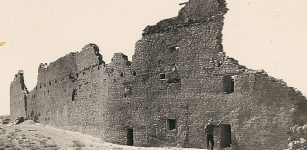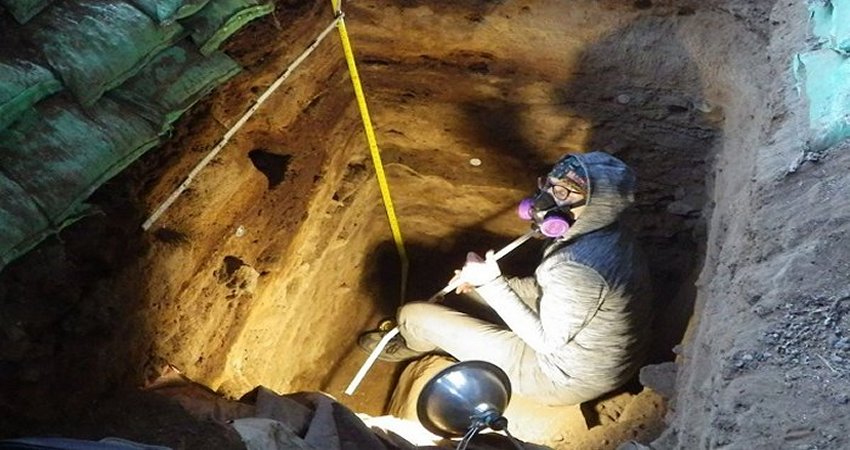Mysterious Ancient T-Shaped Stones Tell Story Of Göbekli Tepe
MessageToEagle.com – Göbekli Tepe (Turkish: “belly hill”) – believed to have been a sanctuary of ritual significance – is a Neolithic site near Sanliurfa in southeastern Turkey. It’s composed of carved megaliths and is estimated to date to the 9,000–10,000 BC.
A number of T-shaped limestone megaliths, some of which surpass 16 feet (5 metres) in height and weigh as much as 50 tons, are arranged in circular formations. Several such formations are positioned on top of one another: each completed circle was covered with dirt, and the process began again atop the same site.
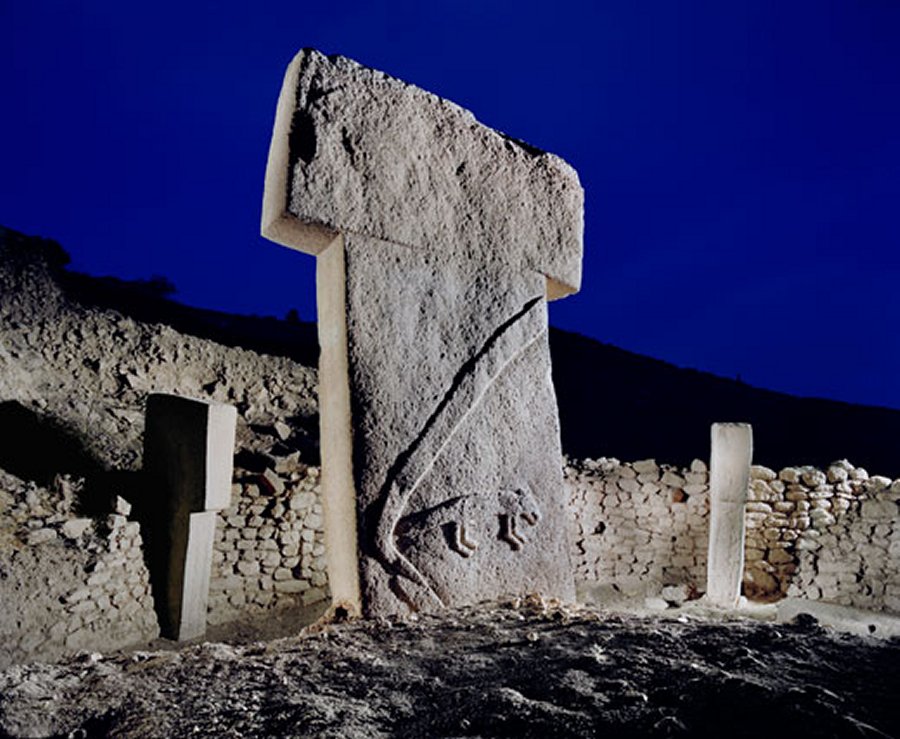
A path to Göbeklitepe, a 12,000-year-old site in the southeastern province of Şanlıurfa often referred as the “point zero of history,” has been decorated with large stone plaques that tell about the ongoing excavation work there.
As part of a joint project by Turkey’s Culture and Tourism Ministry and the United Nations Development Programme (UNDP), sculptors engraved the results of excavation findings on stones two-and-a-half meters in height and one meter in width.
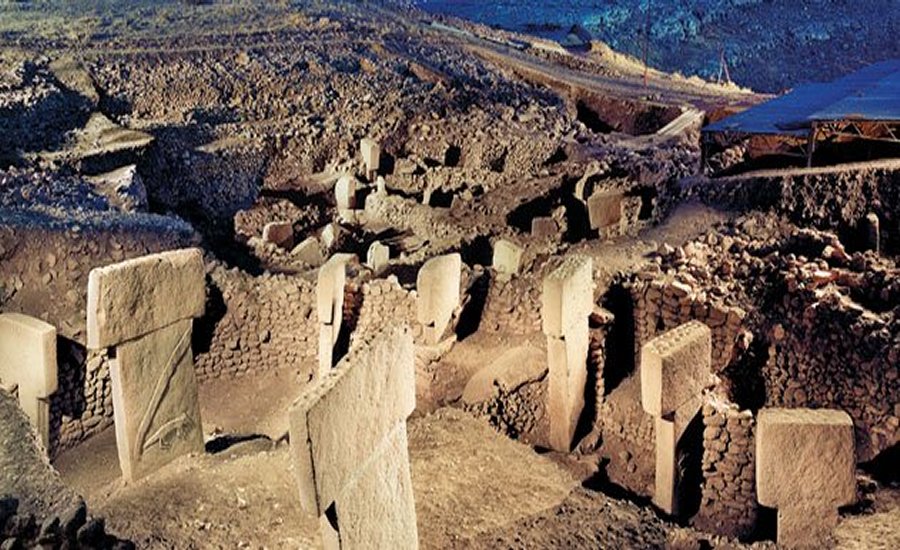
Nihal Dörtkardeş, the coordinator of the project, told Anadolu Agency that Göbeklitepe was receiving increasing attention but that visitors were facing difficulties in finding the site.
“Göbeklitepe has an 11,500-year history. We decided to erect these plaques since there are no road signs here,” she said, adding that 10 such T-shaped stones were erected on the four-kilometer-long road leading to the site.
The T-shaped stones are inspired by the findings at the location. Archaeologists had found such stones with elaborate designs featuring foxes, scorpions, lions, and other imagery.
Göbeklitepe, a site on the UNESCO World Heritage Temporary List, is located 15 kilometers from the center of the southeastern province of Şanlıurfa.
Archaeologically categorized as a site of the pre-pottery Neolithic A Period (c. 9600-7300 B.C.) Göbeklitepe is a series of mainly circular and oval-shaped structures set on the top of a hill.

Excavations began in 1995 under the direction of Professor Klaus Schmidt with the help of the German Archaeological Institute. There is archaeological proof that these installations were not used for domestic purposes, but predominantly for ritual or religious purposes. Subsequently, it became apparent that Göbeklitepe consists of not only one, but many of such Stone Age temples.
Göbekli Tepe – first investigated in the 1960s but dismissed as a medieval cemetery – predates Stonehenge by some 6,000 years.
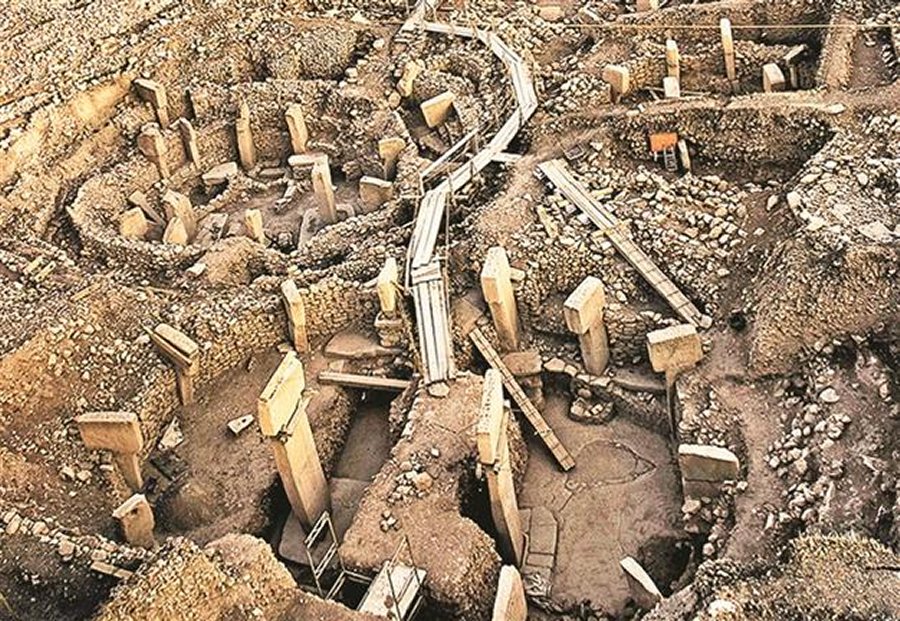
Furthermore, both excavations and geomagnetic results revealed that there are at least 20 installations, which in archaeological terms, can be called a temple. Based on what has been unearthed so far, the pattern principle seems to be that there are two huge monumental pillars in the center of each installation, surrounded by enclosures and walls, featuring more pillars in those set-ups.
Göbekli Tepe’s true age was estimated by comparing the remnants of tools discovered at the site with those that had been carbon-dated from nearby sites, was revealed. The remains of undomesticated plant material and tens of thousands of wild animal bones—chiefly gazelle bones—have been uncovered there, but the lack of trash pits, hearths, or other signals of domestic life indicates that it was most likely not a permanent settlement.
Most experts instead identify it as a ritual site, one that may have attracted worshipers from great distances.
MessageToEagle.com

